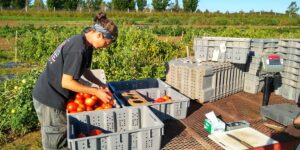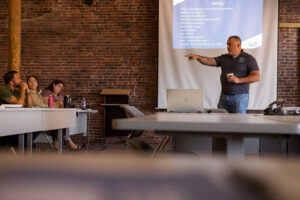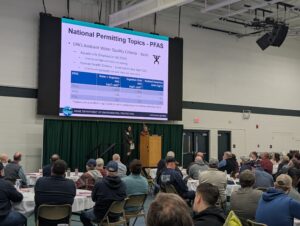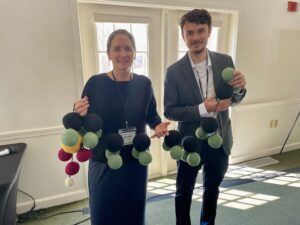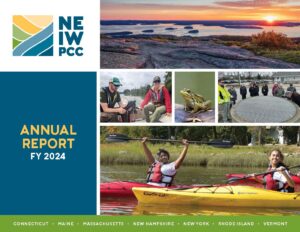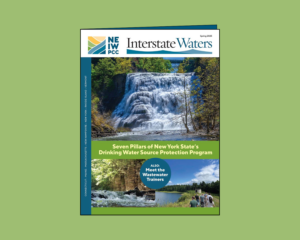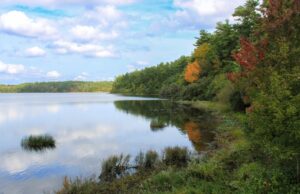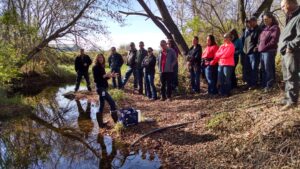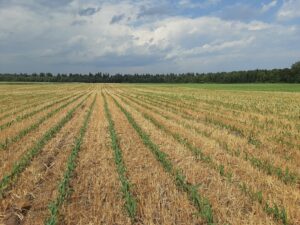-
New Bioextraction Research Informs Water Quality Work in the Long Island Sound
Nutrient pollution resulting from wastewater, fertilizer and stormwater runoff negatively impacts the health of the Long Island Sound and its coastal bays, harbors, and tidal estuaries. One way to address…
-
Developing Leaders in Wastewater: Meet NEIWPCC Trainer Bill Patenaude
By Beth MacBlane In 2005, William (Bill) Patenaude, a principal engineer with the Rhode Island Department of Environmental Management’s (RIDEM) Office of Water Resources, served on an interview committee for…
-
Water Operators Convene in Northern Maine for Training Conference and Tradeshow
NEIWPCC and Maine’s Joint Environmental Training Coordinating Committee (JETCC) continued 35 years of service to northern Maine water and wastewater operators by hosting the 2025 North Country Convention (NCC). More…
-
Art, Community Engagement, and Innovative Solutions Featured at the Annual Nonpoint Source Conference
The 35th Annual Nonpoint Source (NPS) Conference brought together more than 120 watershed professionals to explore a range of topics, including nature-based erosion control, community engagement, and innovative approaches to…
-
Annual Report Details Scope of NEIWPCC’s Work
NEIWPCC’s 2024 annual report is now available, both online and in print. It features a summary of NEIWPCC’s work in the Northeast, highlighting how each project supports the mission of…
-
Long Island ‘Garden Rewards’ Reimbursement Program Available to Help Reduce Runoff and Nitrogen Pollution
Long Island property owners have a unique opportunity to play a role in reducing stormwater runoff, a primary contributor to nitrogen pollution in local waterways, through the annual Garden Rewards…
-
NEIWPCC Magazine Reports on Clean Water Initiatives
The Spring 2025 issue of NEIWPCC’s biannual magazine, “Interstate Waters,” is now available both online and in print. The cover story focuses on New York’s Drinking Water Source Protection Program,…
-
Upcoming Training Webinar on Lake Loading Response Model
The next webinar in the National 303(d) Restoring Our Impaired Waters Webinar Series will provide training on the use of the Lake Loading Response Model (LLRM). The event is scheduled for April…
-
Clean Water Podcast Showcases Adaptive Management Practices at Wisconsin Utilities
In this episode of the “Clean Water Pod” podcast, listeners learn about reducing phosphorus loading to waterways in Green Bay and Madison, Wisconsin using adaptive management practices. Both utilities highlight…
-
Working the Land to Love the Lake: How Farmers Make a Difference in New York’s Lake Champlain Watershed
Nestled between New York, Vermont, and the province of Québec, Canada, spans one of the largest freshwater lakes in North America: Lake Champlain. Like many lakes, phosphorus from nonpoint source…
